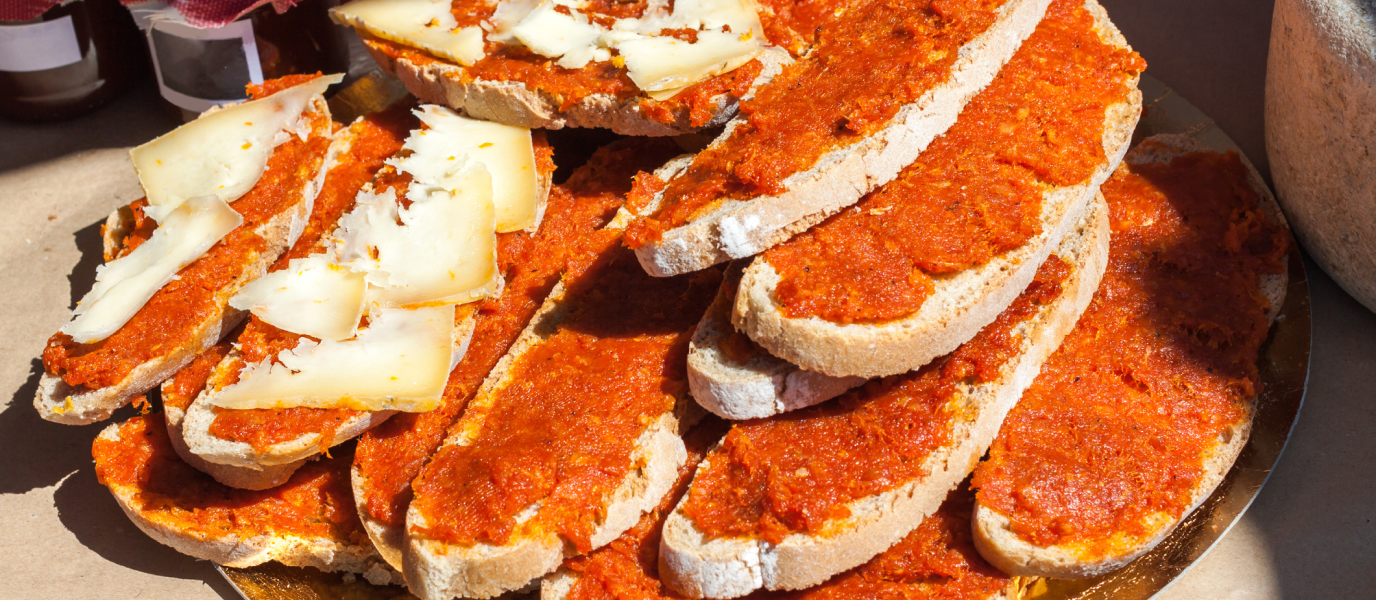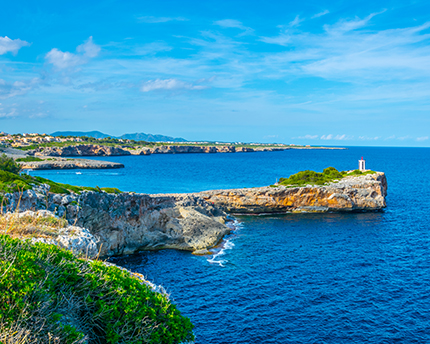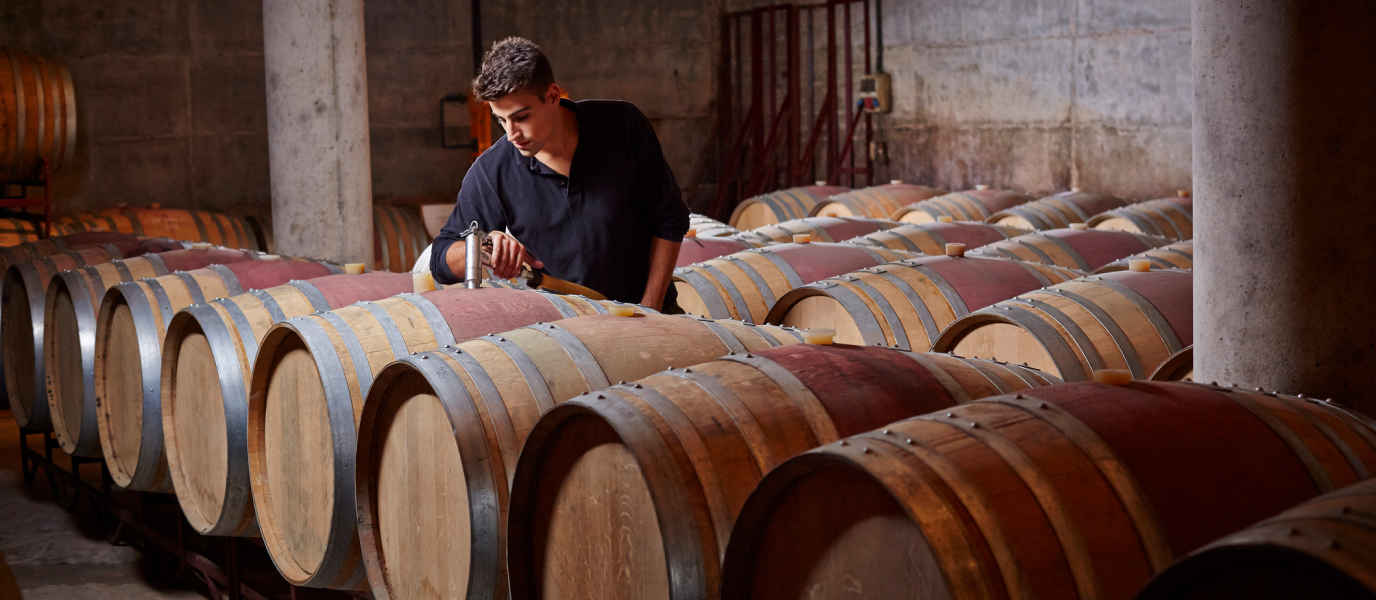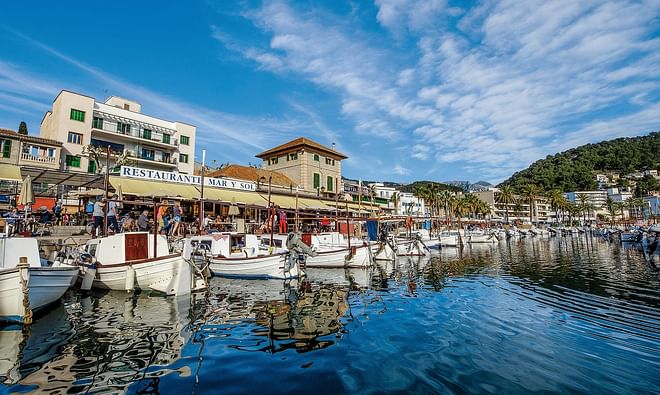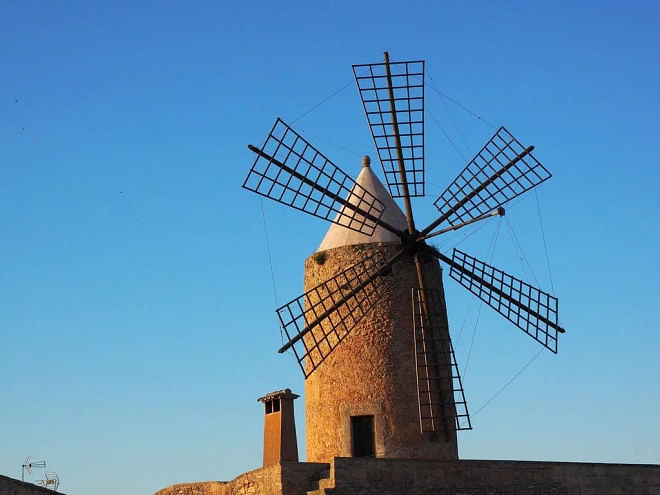Majorcan cuisine goes beyond simple gastronomy. Because, as is the case with the rest of the Mediterranean, in Majorca, eating is truly a way of life. It is the ultimate symbol of the collective living philosophy and a culture that seduces visitors of the Balearic Islands and Majorca, in particular.
Majorcan cuisine is characterised by its broad spectrum of flavours, ranging from salty to sweet, and including specialities such as sobrassada and ensaimadas, its most well-known dishes. But the list of recipes goes on. Here, we offer you some of the most popular and delicious dishes from this cuisine.
Majorcan soups
The oddest thing about Majorcan soups is that they can be eaten with a fork, since they have almost no liquid. The soup consists of several slices of farmhouse brown bread soaked in vegetable stock, using distinct vegetables, depending on the season.
Traditionally, during the winter, pork or another meat is added and turning the dish into a meat soup. But nowadays, this meat-filled soup can be found in restaurant menus year-round.
This dish tends to be served in the same earthenware dish in which it was cooked (the greixonera). Nevertheless, it is also frequently presented in individual clay bowls.
Tumbet
Vegetables are also the base of tumbet (or tombet). These vegetables (potatoes, red peppers and aubergines, although others such as courgettes may also be used) are cut in slices. After being fried, they are placed in layers, covered with a tomato, garlic and olive oil sauce, and cooked in the oven.
The tumbet can be eaten simply like this, accompanied by slices of farmhouse bread to dip the sauce in. Or, it can be served with pork loin, fish or even roasted cabrito.
This dish is considered by many to be the Majorcan version of France’s ratatouille or sanfaina, which is prepared in Catalonia and Valencia.
Arròs brut
In Majorcan Catalan, arròs brut means ‘dirty rice’. This name comes from the cloudy appearance of the broth, caused by the spices that are added during its preparation: cinnamon, paprika, saffron and pepper.
Generally speaking, arròs brut is the Majorcan version of the typical Spanish Mediterranean seasonal rice dish. However, it has a meat base (in the past, typically game meats, especially hare and rabbit). Today, most Majorcan households and restaurants use rabbit, but pork and chicken are also possibilities. Some cooks choose to also add a bit of sobrassada, for extra colour and substance.
Once cooked, some diced chicken and/or rabbit livers are typically added, giving the broth even more turbidity.
Sobrassada rules
Sobrassada is, by definition, the Majorcan (and Balearic) cured meat. This unctuous sausage is made from distinct parts of the pig and is seasoned with paprika, salt and black pepper. This dish alone sums up a large part of Majorcan cuisine. In fact, it forms a part of many culinary preparations and can be eaten year-round in diverse forms.
Surely, the most common and delicious way is to spread it over a slice of toasted pan payés (farmhouse bread). This is the most typical way to eat sobrassada when it has not been cured and has a paste-like texture. Stuffed in the pig’s intestine and cured for months, this paste turns into a delicious cured meat that can be eaten for any reason. Or for no reason at all.
Frito mallorquín
The Majorcan fry-up is perhaps one of the best examples of the link between Majorcan and Mediterranean cuisine. It is also an example of making good use of ingredients. This fry-up, using olive oil, combines both vegetables (potatoes, onions, tomatoes and red peppers) as well as distinct meats, such as pork, lamb, cabrito or turkey (both the noble parts and the organ meats), and condiments such as chilli pepper, fennel, bay leaf, garlic and pepper.
This dish has its roots in ancient history. In fact, it is quite similar to certain dishes of the Sephardic community, descendants of the Jewish people who were expelled from Spain during the realm of the Catholic Monarchs (the late 15th century).
The Majorcan ensaimada
If there is one dessert that defines Mallorca, it would have to be the ensaimada. Although it should also be noted that the fillings of this Balearic delight can also be salty. The word ensaimada comes from saïm, or pork fat, which is its base, along with hard flour and fresh eggs.
Another fundamental element in the making of a good ensaimada is the time of fermentation of the dough: between 12 and 20 hours. Given this preparation time, these pastries should be pre-ordered at least a day in advance.
Bakeries across the island compete to offer the most ‘traditional’ ensaimada, although others attempt to create the most original recipe. The most typical version of this pastry (lisa) is eaten alone, although sprinkled with powdered sugar and it is perfect for breakfast or an afternoon snack.
But they can also have a filling, usually spaghetti squash jam. Recently, some bakers have begun to substitute this filling for cream, chocolate, custard cream, crème brûlée (with a flavour similar to that of Catalan cream), almond, etc.
This product is so important for Majorca that it has its own Protected Geographical Indication (PGI). Ensaimadas with this PGI are always sold in octagonal cardboard boxes bearing a seal of guarantee.
Other Majorcan recipes
The previously mentioned dishes are clearly the most well-known examples of Majorcan cuisine. But the island’s traditional recipe book is quite extensive, and here are just a few examples:
- Snails a la mallorquina: cooked in a broth of parsley, garlic, fennel and chilli pepper. The snails are served alongside this broth, and sometimes, with alioli (garlic and olive oil sauce) to add an extra punch of flavour.
- Coca de Trampó: coca tarts are very typical across the Spanish Mediterranean coast. The Majorcan Trampó coca is made exclusively with seasonal vegetables collected from the island’s gardens.
- Pa amb oli: the renowned pa amb tomàquet has its Majorcan version. The main difference is that here, the garlic and tomato are spread over slices of delicious farmhouse brown bread.
- Panades mallorquinas: these are the Majorcan take on empanadas. They can have any type of filling, although the traditional ones made during Easter week are filled with lamb meat. They tend to contain peas and, sometimes, sobrassada.
- Escaldums: stew made with poultry meats (chicken, hen, turkey, etc.) cooked in a delicious sauce of onions, tomatoes, almonds, white wine and chicken stock.
- Porcella rostida: this typical Christmas dish is an oven roasted suckling pig, accompanied by potatoes and yams, which are also roasted.



























































